Write Us
We are just a call away
[ LET’S TALK AI ]
X
Discover AI-
Powered Solutions
Get ready to explore cutting-edge AI technologies that can transform your workflow!


It would help if you forgot everything you’ve learned about traditional marketing campaigns. The future is in the engaging realm of AR and VR. Today, when digital noise has become more prominent, marketers use augmented reality and virtual reality (AR and VR) to differentiate themselves from the rest of the pack. These aren’t just words; innovative tools are revolutionizing how people interact with digital media.
Although augmented reality ads are only a few years old in the advertising world, they are seeing rapid expansion. Estimates indicate that 2025 global AR advertising revenue could reach $6.68 billion, an increase of over 80% over last year. Augmented Reality Software is a novel method of executing viral ads. With its interactive and personal experience, AR fosters emotional connections between consumers and brands.
Are you interested in learning how to get the most out of AR within your marketing campaign? How do you integrate the augmented reality development software procedure into your campaign planning? Which is the most suitable method, what resources will you need, and what are the most common mistakes to avoid when using AR?
Just Read : Unleashing the Power of AI: Transforming Software Development with Machine Learning
Then this comprehensive blog post is for you.
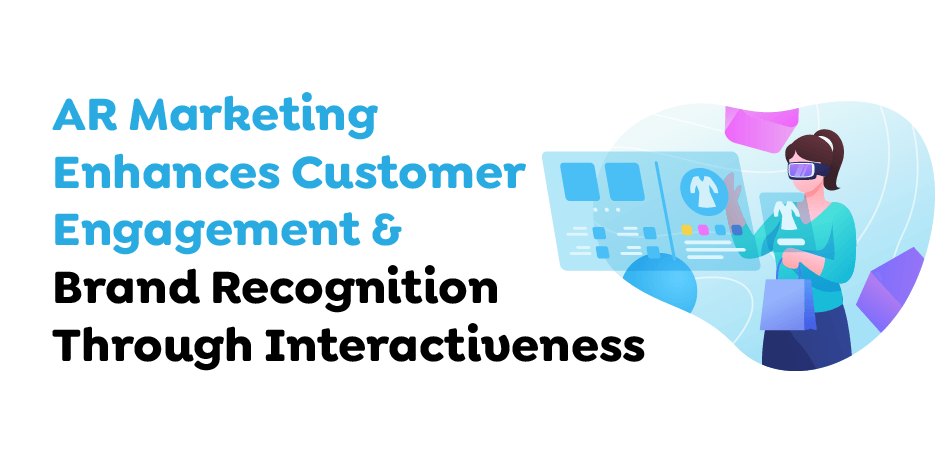
It is generally accepted that augmented-reality marketing is an effective marketing technique that permits companies to interact humanly with their customers. It can be combined with other marketing techniques to boost brand awareness and provide customers with an enjoyable, unique method of learning about your products and services.
By using experience marketing, which engages all the senses and builds stronger emotional connections over traditional advertising methods, AR gives brands competitive advantages. This type of marketing generates lasting memories that increase branding recognition, dedication, and worth by allowing clients to connect with their products and services more personally. Augmented reality development software increases customer experience and retention, saves time, and makes it easier to make buying decisions.
Also Read : DoorDash uses Machine Learning and Optimization Models To Enhance Customer Experience: Here’s How!
Augmented real-time (AR) in marketing could revolutionize it. AR technology allows marketers to provide immersive and engage their customers, enabling consumers to connect with products and brands in an entirely new manner. The technology could transform marketers’ communication with their customers, resulting in powerful campaigns and ultimately driving sales.
One of AR’s main advantages in marketing is that it permits companies to design experiences tailored to each customer’s specific needs. With AR, marketers can create customized experiences that connect with customers specifically and meaningfully. This helps increase trust with customers and improve satisfaction with a particular brand or product.
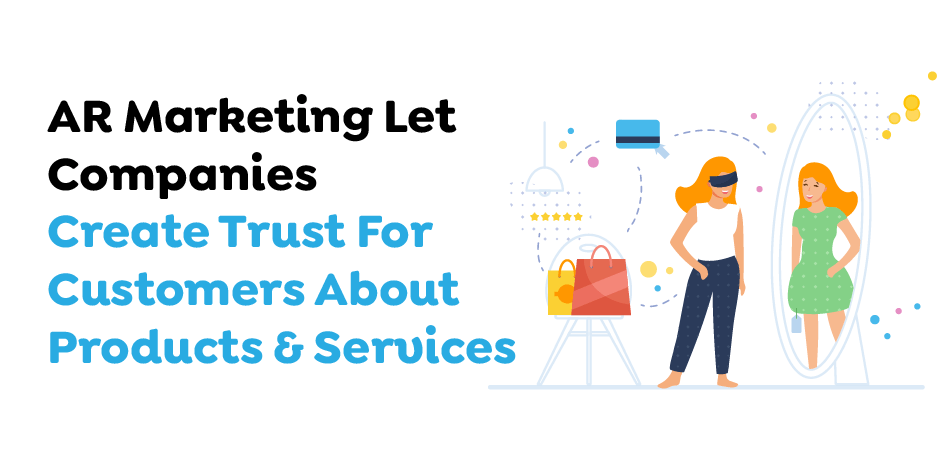
Another advantage of AR for marketing is its ability to bridge the gaps between offline and online experience. AR allows users to engage with the product online, giving consumers a glimpse of how it would appear and feel in the real world. It can increase customer confidence in the product, increase revenue, and improve customer retention.
AR is also an excellent tool for marketers to gather essential customer data. By analyzing customers’ interactions using AR experiences, marketers can gain insights into customers’ behavior and habits. These insights can later be utilized to create better-targeted marketing campaigns and increase the efficacy of marketing initiatives.
In the end, AR’s influence on marketing is enormous. Marketers can increase consumer engagement and sales by creating immersive and interactive experiences tailored to each customer’s needs. As AR technology evolves, the odds are that we’ll see more inventive uses for marketing campaigns.
Also Read : Voice Search Technology: Significant Impact on Mobile App Development!
The world of virtual reality is exciting and ready to be discovered. There are endless possibilities for companies with innovative approaches who are willing to experiment with this latest technology.
Here are a few advantages of the use of AR for marketing.
The number of smartphone users will increase by 7.7 billion in 2027. Meanwhile, the worldwide mobile phone market is expected to expand by 6.8 percent by 2031. The fast-growing smartphone market has a new realm of smartphones making AR capabilities readily available to most users, allowing users to experience an immersive experience from the comfort of their houses.
It will enable companies to be global as their clients can connect to your offerings and information anywhere. Through AR being accessible to virtually every smartphone via hyperlinks and simple QR codes, customers can take your offerings out into the world at the click of a button.
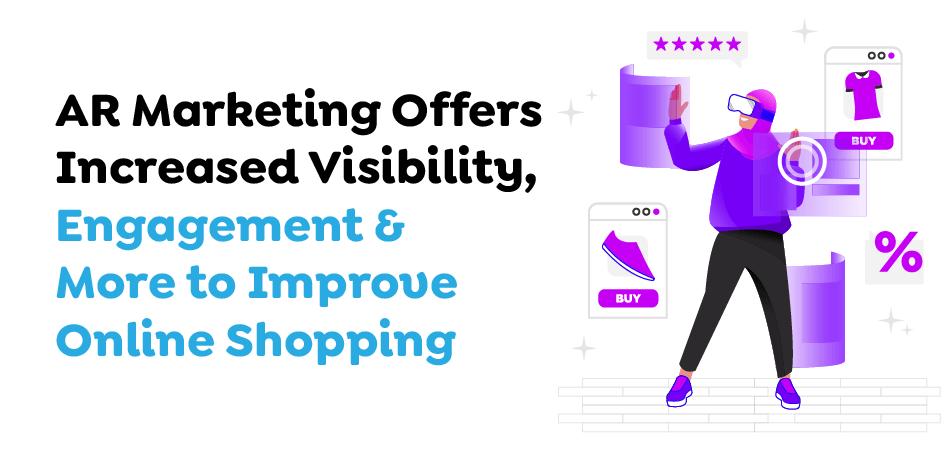
Understanding a complicated product may become overwhelming, making consumers more likely to reconsider purchasing. Using AR marketing can allow users to simplify all of your most challenging data into bite-sized digital pieces that help your customers understand what your products are worth.
Customers will have less trouble understanding your offerings and instead spend time recognizing how they will gain from them. This can speed up your sales process. Brands actively educating customers will likely be perceived as more reliable and transparent. This is vital to build customer loyalty as well as increasing sales.
Effectively implemented AR marketing strategies could ensure that a brand appears imaginative, thrilling, and forward-thinking compared to companies that depend on traditional methods. This can help establish that you are a brand with a futuristic outlook and is particularly crucial for businesses selling costly items that usually require lengthy warranties.
It is often the case that proving that your business will remain in business to honor this warranty can determine your success in making the sale. AR-based experiences can be purely enjoyable! It is well-known that providing customers with enjoyable experiences is an excellent opportunity to build a reputation from which customers would like to interact and shop.
78% of respondents to the survey indicated that they would be likely to share the brand’s AR experience with their friends and family. In comparison, 53% reported they’d previously posted AR content via social media. Creating viral content can be a fantastic method of making your company visible to thousands or even millions of potential clients, thereby improving brand recognition and establishing confidence. The benefits of using AR in marketing come in the distinctiveness of the content you develop – for example, immersive experience-based events. It can help you distinguish yourself from traditional branded content.
The uniqueness of AR content is that it can assist companies in cutting through the marketing clutter, and its engaging and interactive characteristics can improve interaction and boost customer experience. The AR tech is highly flexible, so it could be utilized in printed marketing collateral as quickly as it can be applied to digital content, promoting online and offline participation. Applications can generate QR codes printed on brochures, product packaging, signs, etc. Customers then scan these to engage with 3D based AR content using their phones.
Research has revealed that 61% of customers prefer to purchase at sites with AR technology. In addition, 63% believed that AR could enhance the purchasing experience. Additionally, 35% of customers thought AR could encourage shoppers to purchase frequently. What does this mean for retailers who sell online?
By using AR technology with the help of an augmented reality app development company, businesses can improve sales while decreasing returns. Presenting items in real-time AR helps customers make quicker, more educated purchasing choices. AR can assist consumers in visualizing items that aren’t possible to feel, physically touch, or even wear, taking a lot of the guesswork and uncertainty from shopping online.
AR technology was previously extremely expensive and required specialized knowledge to utilize. With applications, anybody can make incredible AR content at home without investing enormous time or funds. The interface we use, for instance, is made to be as easy to use as possible, using essential drag-and-drop functions, simple sharing, and a vast selection of ready-made models and animations that make your product come to life.
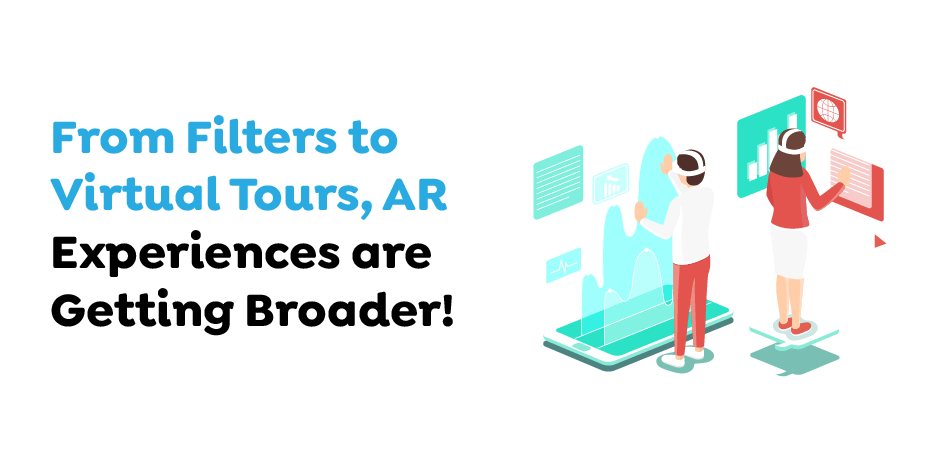
If you use AR to promote your business, it is possible to get your team’s creative abilities the most. It is possible to develop innovative virtual components and bring them into the real world, which can open up infinite possibilities. However, it is important to classify your group’s ideas to create immersive AR applications into three primary areas. This can be helpful as you plan the AR design and the process.
This form of AR involves virtual objects that become integrated into the world, often interfacing with reality. World effects can be a fantastic option for bringing the imagination of particular creatures or objects to reality. World effects can be surface-based, marker-based, or marker-based. This implies that the virtual object is tied to a specific point within the actual 3D world.
A surface-based effect implies that the virtual item or animal is positioned over a particular surface, such as a table or floor. World effects are great for creating a fun and engaging user experience targeted to your audience. They allow you to be truly creative, create your own interactive virtual objects, and make them come to life with varying degrees of interactivity.
We’re familiar with fun filters for photos that are part of our daily digital interactions. Still, most people think of these as something other than an aspect of AR. Whether you are an avid user of photo filters or not, it is essential to recognize their appeal, ability to keep users happy and active, and ability to foster interaction.
If your marketing strategy is mostly based on social media, the addition of a custom filter could increase the level of engagement as well as entertainment. Filters are also the best option to provide your audience with an efficient, creative device that helps users choose the best item without visiting a retail store. Another filter application is Hyper-reality, also known as hyper-reality in shops or malls. This form of AR is typically used to provide interactive and immersive navigation in the real world.
The AR technology allows users to take their viewers on a trip through a different world. If the app activates the app, users can browse and explore the virtual world with their mobile device within the real world.
The notion of trial and error before purchasing can be slightly modified and made more effective through AR. When buying, customers are always looking to see or touch the item. With the ability to let customers try various clothing or cosmetics items virtually instead of physically in a store, augmented reality development software surpasses the limitations of online shopping.
AR lets companies incorporate an element of digital technology into their physical assets, such as buildings or products. For instance, users can scan a product for a virtual experience that will give additional details about the item or associated activities with the brand. Companies and businesses can use these kinds of programs.
We’ll summarize the main factors you must consider when implementing AR for your advertising campaign. This is a brief overview of the steps involved in AR development in marketing
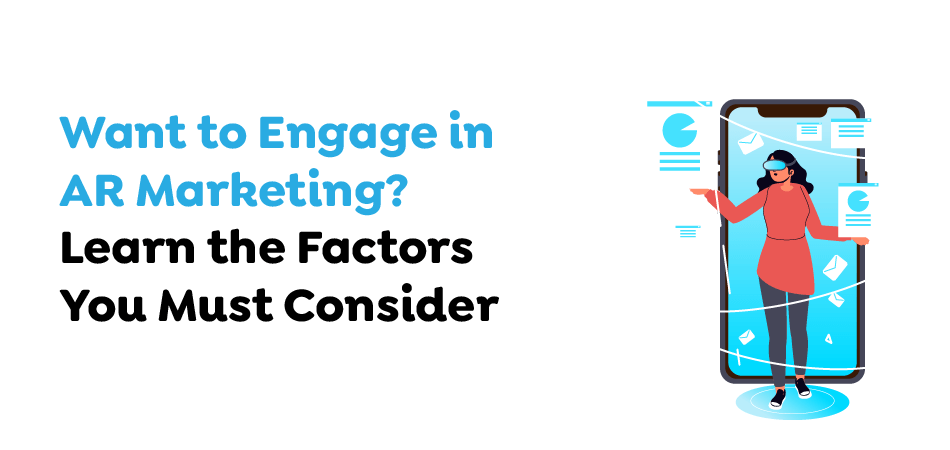
Saying “no” to this crucial issue is not a shame. While AR has demonstrated itself under various circumstances, it is a fun and loose technology. Be sure to consider whether AR is compatible with the brand’s identity and if it could create meaningful communication and connection between the company and its target people.
The creative stage of the process. The idea of the AR experience should stem from the larger campaign vision and not vice versa. Gather your creative group and create engaging and appropriate ideas for the technology that can create virtual places and objects in the world of reality.
You’ve got an idea that you’re imagining, fantastic! We’ll now design the entire interaction users will experience with AR. AR experience. What can they expect to accomplish, and in what way? Ensure your interactions are not complicated and the entire AR experience is easily shared. What will be the contents of the AR experience? Gorgeously designed virtual objects are well, but it is essential to be realistic in terms of quality and scope before the next step of the process: making use of the budget.
It is the most crucial step in every campaign’s plan. In the beginning, you need to decide which budget is most suitable for your range—the amount of budget you’re prepared to spend on AR development, considering the concept you have come up with and the value it can add to your campaign.
The cost of AR development will depend on several factors, including the nature of the AR experience, the quality and number of models used, the types and length of animations, and the kind of interaction. All of these factors can be altered based on the ideal budget.

A crucial aspect of the process. Find skilled and knowledgeable professionals who can manage the AR design, assist you throughout all the steps, and help you select the best option. Our mobile app development company in UK possesses the expertise and the knowledge to design stunning AR experiences, whether it’s app-based as well as using WebAR. If you want to collaborate with us or have a few queries about the possible use of AR for your next campaign, don’t hesitate to contact us.
Your AR development partner will guide you to your idea’s best platform, technology, and development process. The things to think about here are whether your AR experience is mobile or web—or based on social media. For instance, whether the trigger is an image or a location tracker, and whether your impacts will be surface or markers-driven.
Also Read : GPS Tracker Phone App Development | How Much Does It Cost to Develop a GPS App in Dubai?
That’s it! Now, you’re ready to bring your first AR child to life! The difficulty level of AR mobile app development could differ depending on the depth of your AR experiences and other variables. Make sure that you’re enjoying the final result. However, before you start the event and then share your AR experience with the world, thoroughly test every aspect. Every detail counts with AR!
Concerning the development cost of augmented reality, a variety of factors come into consideration, usually defined by the tasks involved and the duration of their completion. This is a list of principal components and the considerations
Also Read : Unraveling the Dynamics of App Development Cost in the UK: An Elaborate Blueprint for 2024 and Beyond
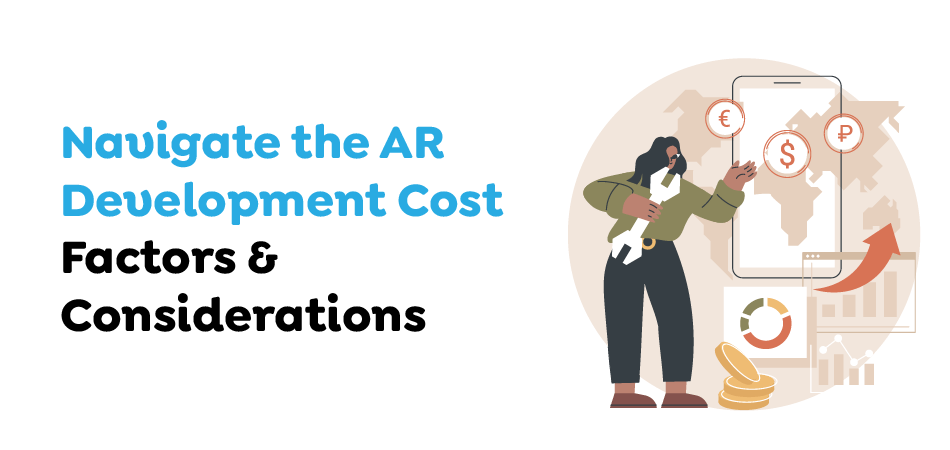
The process involves creating the user interface (UI) and the user experience (UX) to create a visual identity that’s consistent with the company’s branding identity inside the AR application. The aesthetic aspect of the design ensures that the AR experience is fun and user-friendly and that it reflects the branding’s identity.
Also Read : Can Virtual Reality Affect Mobile App’s UI/UX?
Programming covers front-end (client-side) and back-end (server-side) task-related development. Development practices typically adopt an iterative approach, allowing ongoing evaluation and refinement at the end of each development cycle. This iteration method will enable clients to give feedback, resolve concerns, and determine the best way to implement desirable features.
Thorough testing is crucial for ensuring the usability and reliability of the AR application. Test phases could comprise functional tests, usability tests, performance tests, and tests for compatibility between different gadgets and operating platforms. The absence of testing can lead to frustration with the user and technical issues after the launch. This highlights the necessity of putting funds into comprehensive testing within budget.
Prices for AR development can vary widely between companies, with the average hours ranging between $110-$170. Considering the scope of the project as well as the complexity of it, along with the additional features or requirements for customization, is crucial when planning cost-per-hour. Although budgetary constraints can be an aspect, prioritizing the quality of work and providing a smooth user experience with a user-centricdesign, development, and testing is vital to completing an AR project.
Also Read : App testing elevates performance and triggers growth
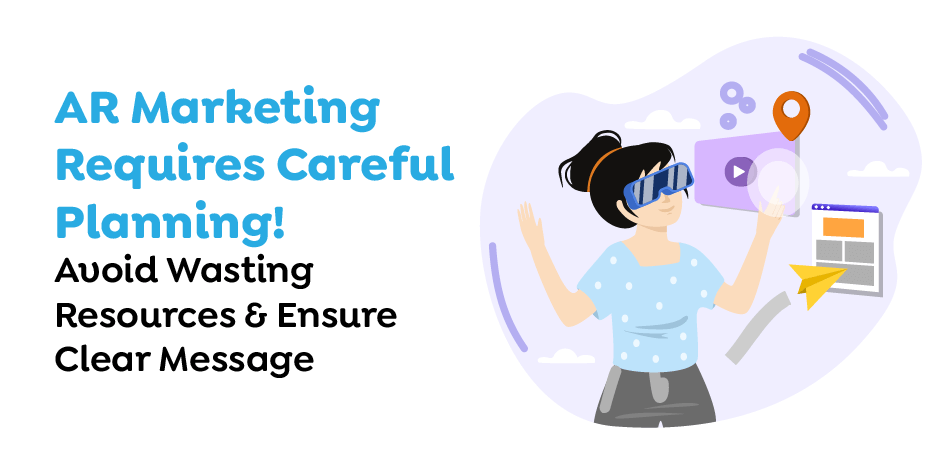
AR certainly presents a fantastic chance for marketers to increase the number of people who engage with their marketing campaigns. However, as packed with new and exciting technology, AR experiences can also take a significant amount of your budget if they’re not integrated with the larger strategy for communication. Before beginning the AR development in marketing, you should review our guide to the most frequent mistakes.
AR is indeed a fantastic technology with great possibilities for creativity. However, it is not revolutionary. Incorporating AR development as an integral part of your plans won’t instantly make your marketing campaign more innovative or influential. Determining how to implement AR within your strategy with the most effective method possible is necessary. The primary goal is establishing significant connections between your company and your target audience and creating strong brand loyalty.
Understanding the technology’s capabilities, strengths, and weaknesses is essential before you begin creating and implementing your AR user experiences. This will help you avoid wasting resources. The comprehensive information in this guide is an excellent starting point. However, it would help if you put more time and energy into comprehensively understanding the various strategies and AR techniques available. At the very least, contact professionals who can provide helpful guidance.
AR is a fascinating and immersive technology. It could steal the attention of the people you want to reach out to at the heart of your campaign. You must be sure that you avoid this. It is essential to ensure that your AR components must be consistent with the message you wish to transmit. The AR should not cause an impact – ensuring that your audience will not be so enthralled with AR technology that they can’t comprehend your message. It should be focused on your message and not on the format.
Also Read : Unleashing the Power of AI: Transforming Software Development with Machine Learning
Creating an enjoyable AR experience could not be the best choice if your brand’s personality is severe and traditional. Make sure you don’t utilize the technology in a manner that isn’t in line with the needs of your customers and the essence of your company and brand. Be sure to carefully consider the options for sharing and social-related prompts in the AR creation. The technology is compelling and can attract users to share content. Get the most value from this by making the AR experience a social right.
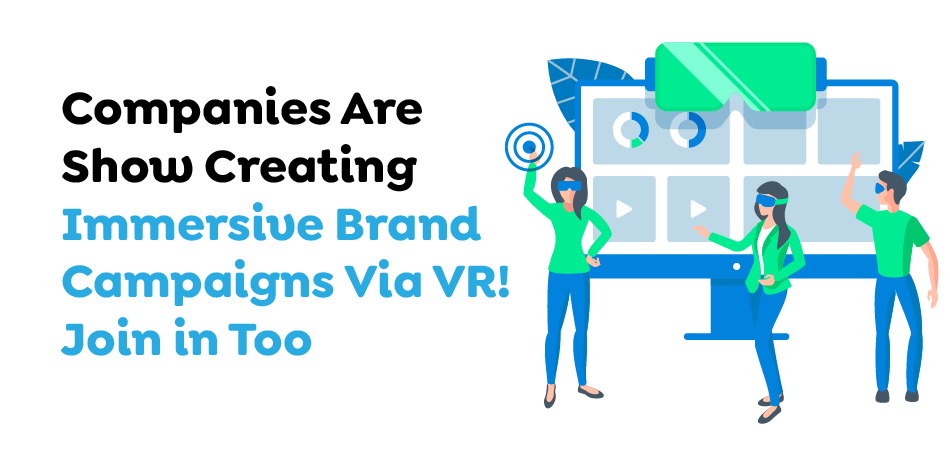
Marketers have begun to leverage AR technology to enhance their marketing strategies. AR is an innovative method of creating engaging and interactive experiences that freshly engage the user. The potential opportunities AR can offer marketers are numerous and diverse, so it’s easy to understand why businesses are rushing to join the race.
A potential marketing opportunity is demonstrating their products without setting up a physical product. Using AR marketing, companies can design an interactive product that customers can observe with realism. It not only helps save the cost of production but also gives users the most convenient experience. Another advantage is the possibility of providing virtual tours of areas like hotel rooms or real estate properties. With AR marketing, businesses can offer an interactive and fully immersive experience that allows users to walk around the building as though they had been there.
Also Read : How Augmented Reality Apps Are Transforming The Learning Experiences?
AR can also provide new methods for marketers to tailor their advertising campaigns. Through AR, companies can provide customized and unique experiences to various users, depending on their personal preferences. A fashion retailer might utilize AR to let customers test out different clothing and purchase the ones they love. The personalized experience could be a major game changer for marketers and allow them to better reach out to their intended audiences.
Finally, AR allows marketers to design viral campaigns that create excitement and share. With an engaging and interactive AR experience, marketers can inspire users to share what they have experienced with their followers and friends via social media, creating ripple effects that millions can see. The kind of advertising that this creates can efficiently increase brand recognition and sales.
Overall, AR presents many opportunities for marketers, and it’s just a matter of time before it becomes a crucial instrument in every marketer’s toolbox. Because it can provide individual experiences, virtual demos of products, and engaging marketing strategies, AR will undoubtedly revolutionize how companies promote their services and products shortly.
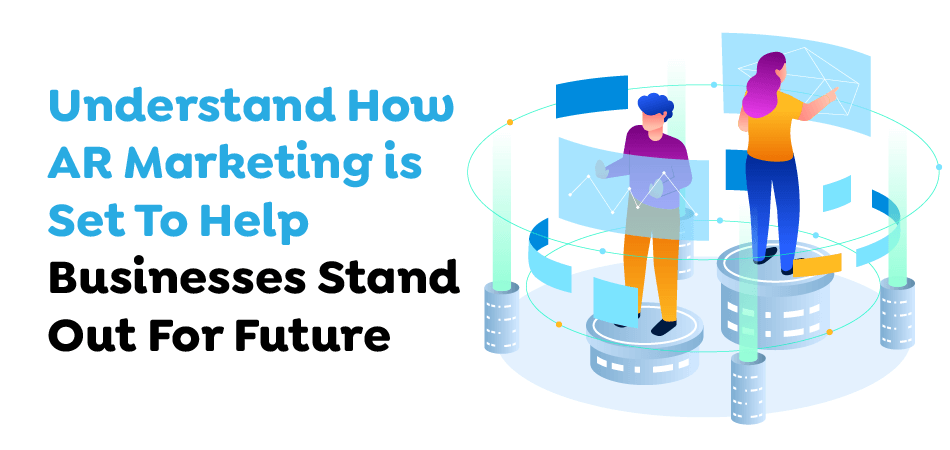
Augmented reality (AR) for marketing is changing how businesses communicate with clients. AR technology lets marketers create interactive and engaging experiences that connect with customers. The trend is growing widespread as AR technology becomes more readily available and cost-effective.
Also Read : How Can Businesses Leverage Augmented Reality to Enhance Customer Engagement?
Augmented reality development software can increase customer interaction. By using AR, customers can interact with the products and services they purchase using a method that’s impossible with conventional marketing techniques. In the case of using an AR, the application can let customers imagine how furniture might look in their house or how the new car will look inside the garage of their home. The interactive nature of AR is not just engaging for the consumer. Still, it allows them to imagine the item in their environment, making it much more likely that they buy the item.
Another benefit of using AR for marketing is its capability to offer customized experiences. By using AR, marketers can use their customers’ data to design experiences that are a hit with specific consumers. For instance, an AR app might suggest merchandise based on prior purchases or preferences, which makes your experience more meaningful and memorable.
AR technology may also be employed to develop engaging brand experiences. Through AR, marketers can create experiences that let customers engage with brands with a brand in a fresh and thrilling method. Creating an AR experience that might allow users to experience a brand-new product or service within an immersive environment or engage with brand content freshly and excitedly is possible. An immersive experience will help build brand loyalty and improve customer satisfaction.
Additionally, AR technology can help firms stand out among competitors. So many companies compete to attract customers’ attention that it is hard to stand out. AR technology offers a distinctive and creative way to get customers’ attention and distinguish yourself. It can aid businesses in increasing branding awareness, gaining new customers, and boosting sales.
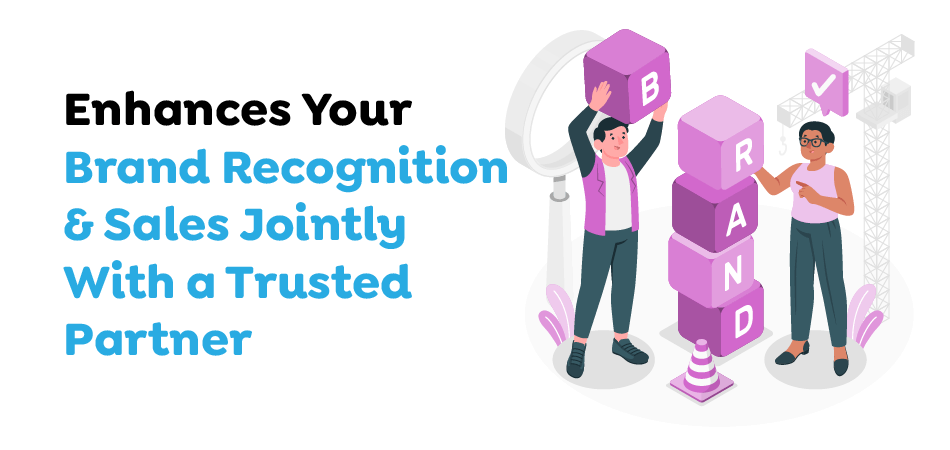
Augmented reality (AR) is changing marketing in ways previously considered impossible. AR improves customer experience through real-time, interactive, fun connections between goods/services and customers. By incorporating AR in marketing plans, companies can increase brand recognition, customer interaction, and sales rate conversion.
AR marketing campaigns can also stimulate creativity and provide new ways of showing products as ever before, creating a distinct brand and offering competitive advantages. In addition, AR marketing campaigns’ flexibility means that they are adjusted to different environments and platforms, which allows businesses to engage with a market across various platforms. AR technology provides a unique personal brand experience, which results in customer satisfaction and support.
Also Read : Augmented Reality: Global Market Analysis And Different Use Cases
If you are looking to incorporate augmented reality (AR) into your marketing strategies, partnering with a trusted mobile app development company like Techugo can be an ideal choice. With their expertise in creating innovative and engaging mobile experiences, Techugo can help you implement AR technology seamlessly into your marketing campaigns. Their focus on user-centric design and cutting-edge technology makes them a valuable partner in bringing your AR marketing ideas to life. No looking anymore! Get in touch with them now!
Write Us
sales@techugo.comOr fill this form